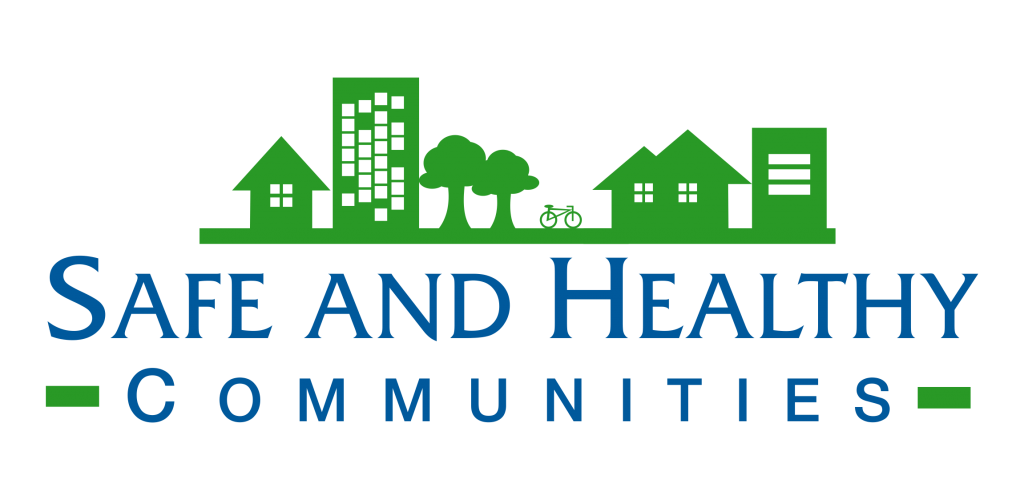Transforming the Built Environment To Support Healthy Seniors and Aging in Place
 America is poised for a radical shift in the structure of communities, the built environment, and health care.
America is poised for a radical shift in the structure of communities, the built environment, and health care.
 Specific environments can make the difference between age-related decline and health and longevity.
Specific environments can make the difference between age-related decline and health and longevity.
 Architects, landscape architects, urban planners, public health officials, park managers, and municipalities play an important role in creating places that support healthy aging for all seniors.
Architects, landscape architects, urban planners, public health officials, park managers, and municipalities play an important role in creating places that support healthy aging for all seniors.
America is Aging
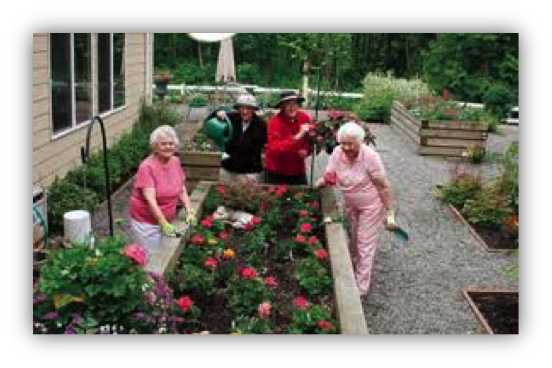
America is poised for a major transformation in the way our communities are designed, planned, financed, and built – and we owe it to the incredible economic force of the boomer generation. According to the latest census, one in three Americans is age 50 or older, with the population of adults age 65 and older projected to increase significantly over the next several decades. Cities and Counties across the country are starting to feel the effects of aging populations. As “baby boomers” continue to age, there are projected increases in the rates of morbidity (disease), disability, and dependency, with a greater demand on health care services. The aging of this generation could create a 75% increase in the number of Americans age 65 and older requiring care by 2050. In the past, little effort was made to ensure that homes and communities were adaptive to the changing needs that aging brings, creating an entire system of environments that foster dependence rather than independence and quite possibly contributing to age related decline.
But today’s seniors, who are more educated, politically involved, technologically savvy, physically active, more ethnically diverse, and with longer life expectancies than previous generations, are demanding more from their homes and communities. This unique, aging population is predicted to cause a radical change in the idea of how people age in America by altering the structure of communities, the built environment (the places we live, work, and play), and health care.
Aging in Place Makes Dollars and Sense
“Seniors are increasingly choosing to age in place and enjoy their independence as long as possible…”
A recent AARP survey reported that today’s seniors are incredibly engaged in creating a new architectural paradigm with some very specific ideas about how housing and communities will look and function. One key trend is that today’s seniors are increasingly choosing to age in place and enjoy their independence as long as possible through active aging, lifelong homes, universal design, and age-friendly communities. Older homeowners provide a variety of reasons for wanting to stay in their current residences. They emphasize the comforts of a familiar dwelling, express strong feelings of attachments, control, and independence, and have a desire to maintain continuity with their pasts.
Older adults have voiced concerns about institutionalized care following reports in the popular press of understaffing, poor patient care, fear of eviction, sparse oversight, and weak legal recourse for safety violations. They express an interest in remaining in their communities for financial reasons as well. The costs for long term care, such as assisted living, nursing homes, and memory care, continue to rise, exceeding inflation, with institutional care at three to five times the expense of non-institutional care, putting it out of reach for many Americans. Middle class seniors who cannot afford the more expensive options must first use the rest of their limited assets to qualify for government aid such as Medicaid, and are concerned about substandard care. Since over 90% of people age 65 and older pay for their health care from their own savings, this is a serious consideration for our most mature members of society. In addition to personal choice, seniors are choosing to age in place for economic motives.
In addition to individual savings, families, government programs, and insurance companies financially benefit when seniors are
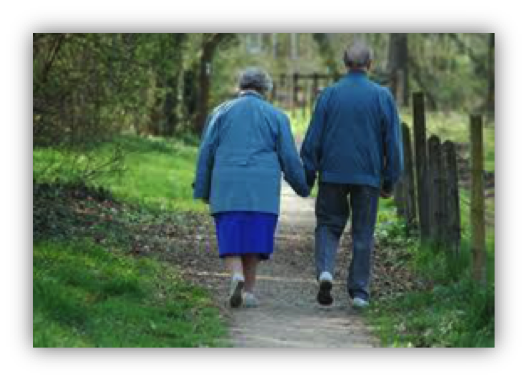
able to stay at home. Promoting aging in place is projected to create expansive savings for Medicare and Medicaid programs, which together are responsible for the majority of long-term care, and for private insurance companies that pick up the difference. One recent study showed that coordinated home health services combined with aging in place can save government programs almost $1,600 a month per person. Since most homes owned by older adults are less likely to have recent improvements, they have the most to benefit from added design features that support mobility, safety, accessibility, and connectivity. Seniors may access funds for improvements to their homes through home equity loans, a reverse mortgage, or the Federal Housing Administration’s Home Equity Conversion Mortgage (HECM) program. Considering the significant health, emotional, and financial benefits to seniors and those who care for them, aging in place makes both dollars and sense.
Aging Adults and Livable Communities
The AARP works to improve the quality of life of older adults and encourages adoption of policies that promote livable communities for older adults. The AARP defines a livable community as “one that is safe and secure, has affordable and appropriate diverse housing and transportation options, and [offers] supportive community features and services. Once in place,
those resources enhance personal independence, allow residents to age in place, and foster
residents’ engagement in the community’s civic, economic, and social life.” However, determining the built environment’s impact on the social, physical, economic, and health needs for aging adults can be challenging, particularly since these requirements can vary considerably
from age 55 to 85 and person to person.
Research suggests communities can be designed for productive aging by prioritizing opportunity, engagement, contribution, and choice to support and enhance the lives of people who want to age in place over time. We believe that the next generation of older adults will benefit from thoughtful policies and design recommendations related to home renovations and new developments. One way to accomplish this is to employ evidence-based research for specifications, inside and outside the home, as well as throughout the community.
Policies that benefit older adults:
-
Expand the availability of affordable housing with universal design principles that accommodate residents and visitors of varying physical abilities;
- Encourage complete streets that serve all users regardless of their chosen mode of transportation; and
-
Empower all aging populations with mobility, access, safety, and specific design features so that they may live fulfilling lives connected to each other, their networks, and their communities.
Home Design Enhancements Earlier Rather than Later
The boomers are markedly different from past generations in their lifestyle needs and desires as they age, particularly around housing. While reporting that they like how their houses are currently serving them, they also recognize that they need to add design features to enhance how they age in place. As they face more chronic health conditions, such design enhancements are crucial and should be completed long before physical, cognitive and social activities become difficult.
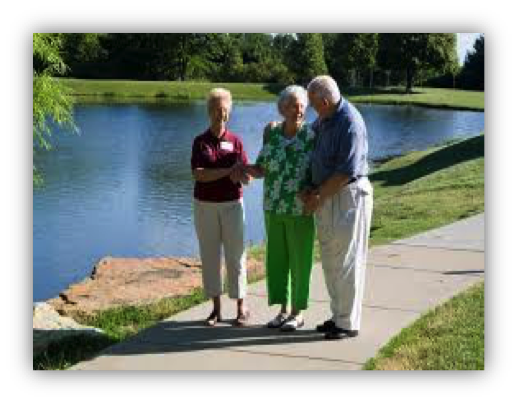 For example, many seniors have compromised functioning of their senses, motor skills, and cognitive abilities, which has a notable effect on how they navigate space and experience their surroundings, making them feel vulnerable. Increasing seniors’ sense of security and personal safety are just as important as facilitating mobility and comfort, in and around the home. But these are more than first floor bedrooms; boomers are asking for the latest research on aging in place. For example, research has found that people may recover just as quickly from surgery in their own homes, reducing the cost of inpatient rehabilitation, so adequate room for maneuvering in a wheelchair makes it possible to return from illness, accident, or surgery sooner. These and other architectural specifications guided by the principles of Universal Design attempt to address the changing needs of an aging population by considering the full range of human perceptual, cognitive, and physical abilities, as well as different body sizes and shapes.
For example, many seniors have compromised functioning of their senses, motor skills, and cognitive abilities, which has a notable effect on how they navigate space and experience their surroundings, making them feel vulnerable. Increasing seniors’ sense of security and personal safety are just as important as facilitating mobility and comfort, in and around the home. But these are more than first floor bedrooms; boomers are asking for the latest research on aging in place. For example, research has found that people may recover just as quickly from surgery in their own homes, reducing the cost of inpatient rehabilitation, so adequate room for maneuvering in a wheelchair makes it possible to return from illness, accident, or surgery sooner. These and other architectural specifications guided by the principles of Universal Design attempt to address the changing needs of an aging population by considering the full range of human perceptual, cognitive, and physical abilities, as well as different body sizes and shapes.
Safe Transportation and Complete Streets
Safe transportation is especially important for seniors, who are more likely to suffer from fatal and nonfatal crashes than their younger counterparts and as pedestrians. As people age, their ability as drivers to judge left-turn gaps diminishes. Complete Streets is a transportation and design approach that prioritizes safety for all users, regardless of age, ability, and mode of transportation. A Complete Street may include methods for multimodal transportation and traffic calming features such as sidewalks, bike lanes, wide paved shoulders, special bus lanes, comfortable and accessible public transportation stops, frequent and safe crossing opportunities, median islands, accessible pedestrian signals, curb extensions, narrower travel lanes, roundabouts, and more. While many cities offer convenient transportation options, transportation coordination, volunteer state drivers, and services for persons with disabilities, most do not participate in Complete Streets nor do they have a policy in place for commitment to livability and age-friendly communities. Complete Streets, or roads that serve users of all ages and abilities, assures that pedestrians, bicyclists, motorists, and transit riders can coexist safely on the same routes.
Physical Activity and the Role of Design
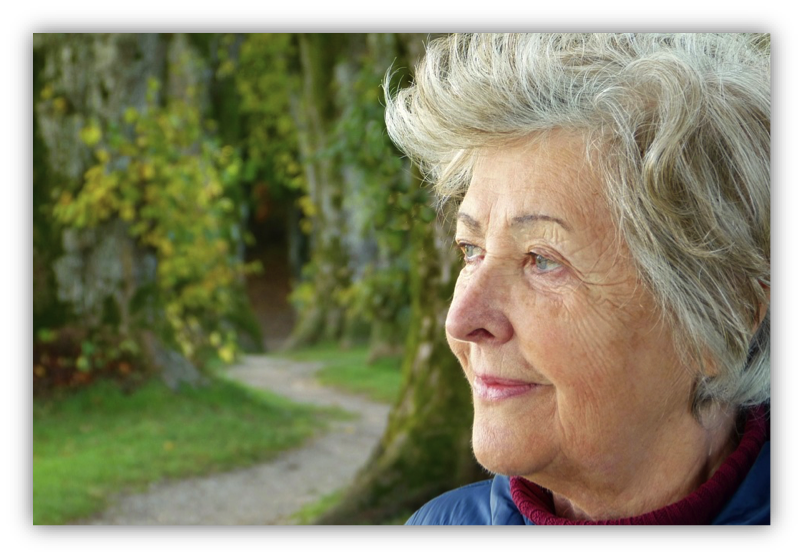
Research on aging points to physical exercise as an effective way to maintain active and independent lifestyles. Studies have shown that moderate and high levels of physical activity are associated with healthy aging outcomes such as living to an advanced age, fewer or no disabilities, higher cognitive and physical functioning, an active engagement with life, and a lower probability of disease or disease-related disability. The most critical concern to older adults is falling. The National Safety Council reports that each week more than 30,000 Americans over the age of 65 are seriously injured by falling, and nearly 250 die as a result. A paper notes, “the incidence rises steadily after middle age and tends to be highest among individuals 80 years of age and older.”
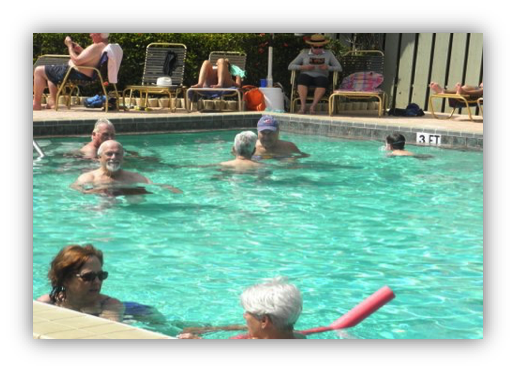 Exercises such as Tai Chi that improve lower-body strength and balance have been shown to reduce the risk of falls and the number of falls between 10 and 40%. Other forms of activity have shown similar results. Despite the evidence on how engaging in exercise can benefits older adults, the majority of them do not engage in physical activity and their adherence to physical activity programs is often low.
Exercises such as Tai Chi that improve lower-body strength and balance have been shown to reduce the risk of falls and the number of falls between 10 and 40%. Other forms of activity have shown similar results. Despite the evidence on how engaging in exercise can benefits older adults, the majority of them do not engage in physical activity and their adherence to physical activity programs is often low.
Research has shown older adults are more likely to engage in physical activity if they have access to local services, favorable walking and traffic conditions, such as sidewalks and low traffic speeds, pleasant neighborhood aesthetics with parks and trees, and the ability to easily access public transportation. This underscores the importance of designing for physical activity in housing and new communities for aging adults.
Loneliness
Seniors are more likely to experience loneliness and social isolation, which has been associated with not only distress and emotional suffering, but also an 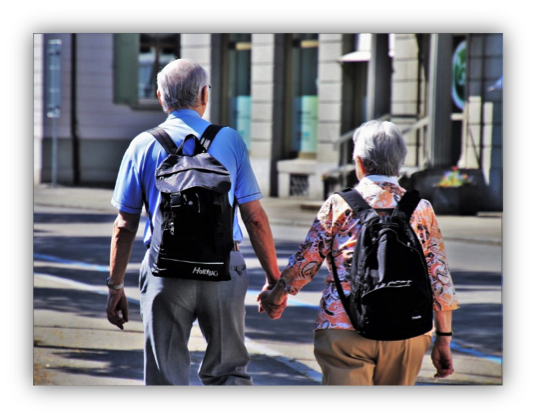 increased risk for a variety of psychological and physiological health problems. These problems can include decreased physical activity; higher rates of obesity, blood pressure, and cardiovascular risk, poor sleep, decreased self-esteem, higher levels of depression, pessimism and anxiety, and lower levels of social skills. Loneliness has also been linked to a decline in activities of daily living, difficulties with upper extremity tasks, less mobility, difficulty in climbing steps, and an increased risk of death. Since social activity and engagement is critical to mental and physical health, thoughtful design of places that support interactions with family, friends, and community should be essential aspects of community planning. Spaces designed for exercise and community activities can also serve as interactive places for group exercise, political events, community nights, live entertainment, meditation, dance and art classes, educational seminars, cooking, sports activities, and centers of faith. While homeowner association organizations can give residents voice in community decision-making that can enhance social engagement, communities can be designed and planned around helping seniors to remain engaged, supported, and connected.
increased risk for a variety of psychological and physiological health problems. These problems can include decreased physical activity; higher rates of obesity, blood pressure, and cardiovascular risk, poor sleep, decreased self-esteem, higher levels of depression, pessimism and anxiety, and lower levels of social skills. Loneliness has also been linked to a decline in activities of daily living, difficulties with upper extremity tasks, less mobility, difficulty in climbing steps, and an increased risk of death. Since social activity and engagement is critical to mental and physical health, thoughtful design of places that support interactions with family, friends, and community should be essential aspects of community planning. Spaces designed for exercise and community activities can also serve as interactive places for group exercise, political events, community nights, live entertainment, meditation, dance and art classes, educational seminars, cooking, sports activities, and centers of faith. While homeowner association organizations can give residents voice in community decision-making that can enhance social engagement, communities can be designed and planned around helping seniors to remain engaged, supported, and connected.
Nature Is a Fountain of Youth for Seniors
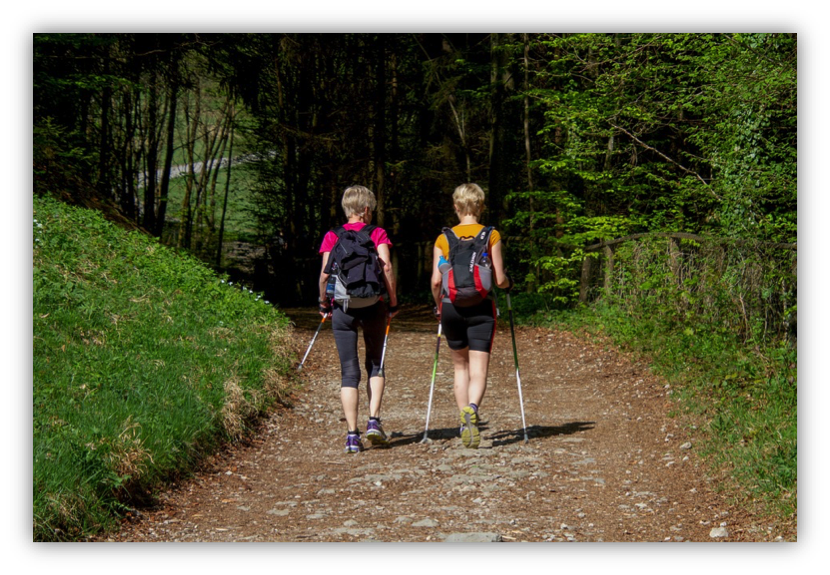
Seniors can face challenges to getting out in nature, but when they are able to they realize numerous benefits, including living longer and having a better quality of life through increased engagement and participation. Two recent studies, one from Harvard and the other published in the journal Nature, found that those whose homes were surrounded by plants and trees lived significantly longer and had reduced rates of disease, even when the researchers controlled for age, socioeconomic status, and race. In addition, other studies have shown that increased exposure to nature can lower blood pressure, reduce stress and obesity, and speed up recovery following surgery.
A recent study in Canada tracked how important nature is specifically to seniors’ physical, mental, and social health. Respondents reported that beauty in nature encouraged them to get out of the house and exercise more, but even when exercise was not the main focus, many shared feelings of rejuvenation, renewal, and restoration. Respondents especially noted the tranquility of blue spaces such as ponds, lakes, streams, oceans, and fountains to relax and spend time in for contemplation and reflection. Green spaces such as woods, forests, and meadows enhanced social wellbeing by providing opportunities for both planned and spontaneous interaction and engagement, including multigenerational exchanges. Participants also reported that outdoor activities such as exercising the dog, meeting friends for regular walks, and volunteering in gardens and parks were a pleasant way to structure their day since they no longer had a regular family or work schedule.
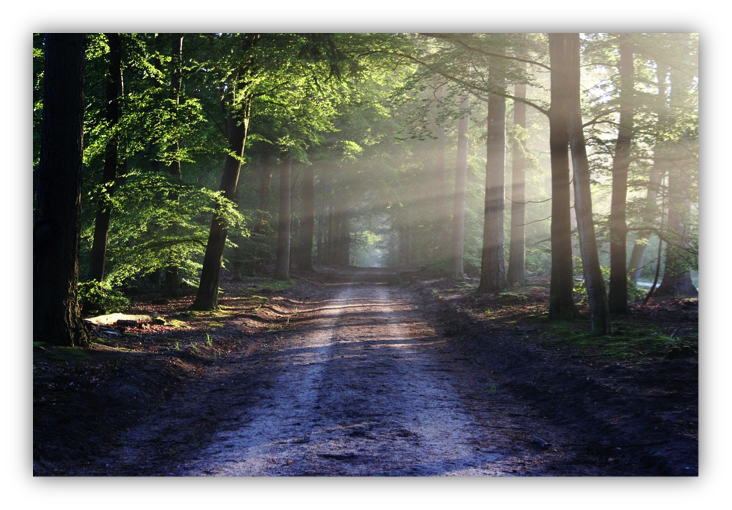 Time in nature seems to be good for reducing depression, a risk that seniors increasingly face. A University of Michigan study found that seniors who attended group walks in natural settings could not only improve positive emotions but “contribute a non-pharmacological approach to serious conditions like depression.”
Time in nature seems to be good for reducing depression, a risk that seniors increasingly face. A University of Michigan study found that seniors who attended group walks in natural settings could not only improve positive emotions but “contribute a non-pharmacological approach to serious conditions like depression.”
Those who had recently experienced a stressful life event such as serious illness or death of a loved one, particularly benefited from outdoor strolls with others. Outdoor activities also make us feel more energized, according to a study at the University of Rochester, giving seniors another reason to get outside. Spending time outside can also increase memory and attention, a resource for executive functioning and self-regulation. Findings such as these show that access to ‘nearby nature’ allows seniors to not only realize the benefits of exercise, but also encourages them to socialize more, which in turn helps to reduce feelings of loneliness and isolation. With the benefits of increased physical activity, greater social engagement, better overall health, enhanced mental health, elevated energy, and improved cognition, nature is a fountain of youth for older adults.
Since connection to nature is a veritable fountain of youth, seniors should have access to open space areas with shade and seating options, as well as activities such as birding and gardening to encourage older adults to get outdoors. Buildings can be designed to feature views of nature to reap the health benefits even while inside. If more seniors knew about these benefits and public parks were designed to be more senior friendly through specific enhancements such as walking loops and programmed activities, park use by older adults would increase. Considering the low cost of this intervention, park administrators, and designers should be providing more resources to create safe environments, increase supervised activities, and promote outreach and education, particularly in low-income neighborhoods and areas where park use is low. Designing more senior-friendly parks with shorter walking-only loops and programmed activities can enhance their experience and improve attendance of seniors at parks. Nature and its benefits are an essential aspect of public health infrastructure, especially for seniors.
Walkable Communities are Key to Senior Health
Places to sit and rest, good lighting and signage, convenient restrooms and water fountains, smooth and even sidewalks and paths that reduce the fear of falling, and traffic-calming features that make crossing streets safer can go a long way in helping seniors get out and about.
A well-designed built environment (places we live, work, and play), is key to helping older adults participate in physical activity and improve their health and longevity. Walking is the most common form of exercise for older adults. Unfortunately, many older adults report concerns about having good and safe places to walk and tend to have a low desire to exercise.
Studies have documented the importance of destinations within walking distance as a key motivator for walking, suggesting that higher densities, greater connectivity, and mixed land use supports walking and its many benefits.
Since most people age 50 and older still drive themselves to get around their neighborhood, a community that prioritizes a variety of transportation choices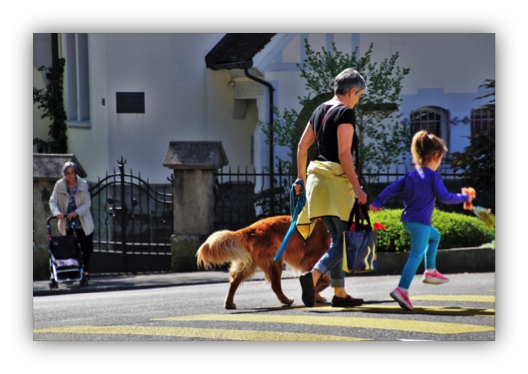 such as safe and inviting trails, encourages physical exercise like walking and biking instead of driving. Surveys show that 60% of Americans would ride a bicycle if they felt safe doing so, and eight out of ten agree that bicycling is a healthy activity. Places to sit and rest, good lighting and signage, convenient restrooms and water fountains, smooth and even sidewalks and paths that reduce the fear of falling, and traffic-calming features that make crossing streets safer can go a long way in helping seniors get out and about. Connections to a variety of services and activities such as grocery stores, restaurants, shops, theaters, libraries, hair salons, gardens, places of worship, fitness centers, and farmers’ markets keep aging populations healthy and engaged. Other forms of exercise, such as dancing, swimming, and other activities that have been scientifically proven to support the health and well-being of seniors can be placed within walking distance of housing to increase accessibility. Multi-generational playgrounds that feature low-impact equipment for improving balance, flexibility, and cardiovascular fitness have become increasingly popular as well. In addition, housing that is situated in close distance to walking paths and natural or undeveloped areas combines the benefits of exercise and access to nature. Considering the physical ailments from aging and their associated costs, including medical care and assisted living facilities, healthy design of the physical and social environment is a powerful tool to benefit aging adults’ overall health and quality of life through physical exercise, social engagement, and economic savings.
such as safe and inviting trails, encourages physical exercise like walking and biking instead of driving. Surveys show that 60% of Americans would ride a bicycle if they felt safe doing so, and eight out of ten agree that bicycling is a healthy activity. Places to sit and rest, good lighting and signage, convenient restrooms and water fountains, smooth and even sidewalks and paths that reduce the fear of falling, and traffic-calming features that make crossing streets safer can go a long way in helping seniors get out and about. Connections to a variety of services and activities such as grocery stores, restaurants, shops, theaters, libraries, hair salons, gardens, places of worship, fitness centers, and farmers’ markets keep aging populations healthy and engaged. Other forms of exercise, such as dancing, swimming, and other activities that have been scientifically proven to support the health and well-being of seniors can be placed within walking distance of housing to increase accessibility. Multi-generational playgrounds that feature low-impact equipment for improving balance, flexibility, and cardiovascular fitness have become increasingly popular as well. In addition, housing that is situated in close distance to walking paths and natural or undeveloped areas combines the benefits of exercise and access to nature. Considering the physical ailments from aging and their associated costs, including medical care and assisted living facilities, healthy design of the physical and social environment is a powerful tool to benefit aging adults’ overall health and quality of life through physical exercise, social engagement, and economic savings.
Design Can Make the Difference Between Decline and Longevity
The growing “silver wave” is creating a sense of urgency and need to think innovatively about how to address the physical, emotional, and economic impacts of an aging population. Policies, plans and programs that swiftly transform the built environment for aging adults, particularly communities of color and low-income, are greatly needed. Research informs us that healthy and active aging should include affordable and flexible housing design, convenient access to healthcare, lifelong learning, and nearby spaces that promote exercise, social engagement, and an overall sense of safety. Living spaces must be comfortable and convenient, and communities well connected through accessible paths and transportation options, including the ability to walk to destinations. Housing and neighborhoods must be constructed to support our seniors with features that minimize the inconveniences of aging and maximize vitality, socialness and health.
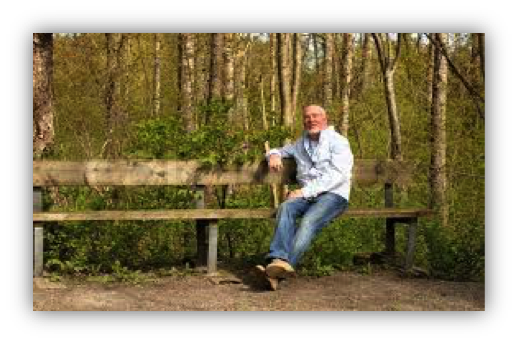 Architects, landscape architects, urban planners, transportation managers, public health specialists, park managers, and elected and appointed officials play an important role in supporting healthy aging for all seniors by creating environments that can make the difference between age-related decline, and longevity and health. A Health Impact Assessment (HIA) can provide a guide to creating exceptional communities that promote equity, health, safety, and well-
Architects, landscape architects, urban planners, transportation managers, public health specialists, park managers, and elected and appointed officials play an important role in supporting healthy aging for all seniors by creating environments that can make the difference between age-related decline, and longevity and health. A Health Impact Assessment (HIA) can provide a guide to creating exceptional communities that promote equity, health, safety, and well-
being for residents of all ages and abilities. The CDC defines an HIA as a “tool that can help communities, decision makers, and practitioners make better choices that improve public health through community design.” As our nation’s population grows older and chronic illness associated with aging is on the rise, the places we live, work, and play are critical to alleviating the physical, emotional, and financial costs of aging. Let us know if we can assist you with developing a tool, collect data, conduct a study or prepare an HIA for your organization, community, or municipality that considers the important role of seniors and the built environment in supporting public health, longevity and quality of life.
About the Authors
Susan Cathleen Gunn, Ph.D., is on the Board of Directors of Safe and Healthy Communities. Dr. Gunn has comprehensive experience in the design, construction, planning, development, financing, and history of the natural and built environment with a driving quest for sustainability at a variety of scales. In addition to a career in the built environment, Susan has assisted, developed, and taught courses in architecture and planning on ethics, ecology, culture, history, and representation at the University of Colorado Boulder and the University of Colorado Denver. She recently founded the non-profit, NatureWorkshop, dedicated to promoting the democratic access of the economic, physical, emotional, psychological, and spiritual benefits of the natural world and nature-inspired practices. NatureWorkshop consults with individuals, architects, landscape architects, urban and regional planners, real estate developers, municipalities, and public health officials on Best Practices in Longevity Design, Biophilic Design, Forest Schools, and Nature Immersion. Dr. Gunn holds a B.ENVD in Architecture, an M.S. in Real Estate and Construction Management, and a Ph.D. in Design and Planning. www.natureworkshop.org and sgunn@natureworkshop.org.
Karen E. Roof, Ph.D., is Executive Director of Safe and Healthy Communities (SHC), a non-profit organization dedicated to creating and ensuring safe, healthy, sustainable, and equitable communities for all. She is committed to enhancing decision-making and public health outcomes within the sectors of planning, transportation, housing, the natural environment, equity and social cohesion in research, programs, policies and plans. Prior to SHC, she was Director for over 10 years at EnviroHealth Consulting focusing on evidence-based, comprehensive, collaborative, and sustainable approaches to improving public health. Dr. Roof conducts research, facilitation, trainings and leads projects related to health impact assessments, health equity, healthy transportation and urban planning, the aging population and policy development. Karen taught a graduate course called, Planning for Healthy Communities: A Public Health and Urban Planning Approach at the University of Colorado, Denver, from 2008 – 2013. She holds a BS in Political Science/Economics, MS in Environmental Policy and Management, and a Ph.D. in Design and Planning. www.safeandhealthycommunities.org and Kroof@safeandhealthycommunities.org.

